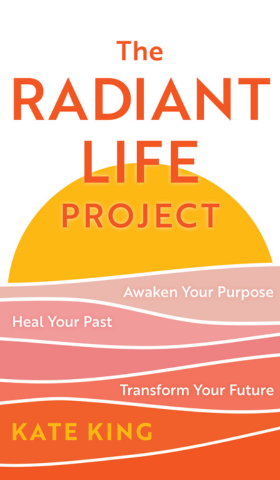- Finding Unshakable Power in a World That Wants to Pull Us ApartPosted 5 months ago
- What could a Donald Trump presidency mean for abortion rights?Posted 5 months ago
- Financial Empowerment: The Game-Changer for Women in Relationships and BeyondPosted 6 months ago
- Mental Health and Wellbeing Tips During and After PregnancyPosted 6 months ago
- Fall Renewal: Step outside your Comfort Zone & Experience Vibrant ChangePosted 6 months ago
- Women Entrepreneurs Need Support SystemsPosted 6 months ago
Allowing Rest — A Personal Protest of Hustle Culture

By Kate King
It’s no secret that Western society measures success by a person’s productivity, popularity, and achievements. People are encouraged to burn the midnight oil and reserve sleep until they’re dead. This is hustle culture.
Despite the glory and shine that our culture attaches to the never-ending sprint toward a vanishing horizon line, it’s not glorious at all. In fact, hustling as though your life depends on it day in and day out, juggling the ever-increasing tasks and responsibilities inherent in modern-day “adulting,” gives your mind and body a physiological message that your life is, in fact, in danger. Your internal system can’t discern the difference between the approaching due date of an incomplete project or a predator approaching with a loaded weapon. To the nervous system, threat is threat, and it reacts every time, just as it was designed to.
The human body has four survival responses to danger and stress:
Fight: When something or someone seems dangerous or threatening, with this survival response the only way to ensure safety is to make yourself seem big and scary and fight by any means necessary to make it out alive. This can be a physical or verbal altercation or psychological manipulation used as a passive-aggressive form of fighting. The narrative is, “It’s a dangerous world, and I need to fight to survive.”
Flight: When you don’t trust that you are big or strong enough to fight, you run like your life depends on it. This can mean physically removing yourself and moving away from danger, or psycho-emotionally disconnecting or dissociating from a situation without actually physically moving. The narrative of flight is, “The only way to remain safe is to remove myself from this threat.”
Fawn: When you don’t feel strong enough to fight or fast enough to run, the next option is to try to soothe and disarm a predator by giving them just enough of what they want so they cease the threat. This looks like placating, appeasing, and other people-pleasing behaviors. The narrative here is, “If you’re okay, I’m okay, so I’ll do everything I can to keep you feeling okay.”
Freeze: When fighting, running away, and appeasing all appear futile, there’s nothing left to do but play dead and hope the predator loses interest and leaves you alone. The freeze narrative is, “All hope is lost. I’ll make myself as unappealing as possible and hope they lose interest.”
Survival responses are tools humans utilize during times of dire threat. We were designed to access these mechanisms as necessary, but we were never intended to live in such states for a prolonged time. The body’s sophisticated chemical system of hormones, neuromodulators, and other nervous system components know how to effectively jumpstart a survival response, but they must be regularly returned to a healthy baseline of calmness and stability in order for a person to thrive.
Marinating in stress hormones for extended periods of time leads to various physical and mental health issues that ultimately result in a nose dive directly into burnout territory. As superhuman as humans believe themselves to be, we’re still part of the ebb and flow of all living beings on Earth. Tides swell and recede, the moon waxes and wanes, and humans must respect their need for a balanced rhythm of exertion and rest.
Society has become so deeply consumed by the narratives of success and perseverance that most people don’t know how to rest, even when granted the opportunity to do so. During the Covid-19 pandemic when the globe pulled the plug on most forms of productivity, confining many people to their sweatpants and their homes, people struggled massively. The limits of their ability to do — to execute, to produce, to sell — became intolerable. Rather than a collective sigh of relaxation, mental illness spiked like never before. Nobody knew what to do with themselves if they weren’t permitted to run rampantly on the endless hedonic treadmill toward…where exactly?
Humanity is experiencing a new dawn where technology offers access to seemingly infinite information and knowledge. Consider if you utilized the knowledge at your fingertips for the health and repair of your weary system rather than pummeling and draining yourself until you collapse from exhaustion? It all begins by helping your nervous system cool its jets and sync into a cadence of flow that allows for balance in work, rest, social connection, parenting, and all fronts of life.
These three nervous system regulation tools will positively impact your ability to live more fully and radiantly without the damaging effects of prolonged burnout:
1. Four square breathing: Inhale to the count of five, hold your breath for the count of five, exhale to the count of five, and hold your breath for the count of five. Repeat ten times. This breathwork soothes the adrenal glands in the lower back that release stress hormones into your system during stressful experiences.
2. Parasympathetic sigh: This technique is the most well-documented type of breathwork to soothe the nervous system. Inhale normally, then at the top of your inhale inhale a bit more. Then exhale a long and slow out-breath, including an audible sigh if possible. Repeat five to ten times. The double inhale contracts the space surrounding your heart, which releases a soothing nervous system response when slowly released. The audible sigh tones the vagus nerve of the parasympathetic nervous system, which is responsible for calming your body.
3. True YES and true NO: A great deal of problems arise when a person says yes to opportunities, relationships, and responsibilities they truly want to say no to. Whether it’s limiting working hours or being mindful of social overload, it’s important to learn how to say no when your mind, body, and heart need rest. It can be tricky to discern yes from no in the mind because the mind is continually seeking approval and belonging. The key is to seek true yes and true no in the body through sensation, as the body doesn’t lie. Practice by closing your eyes and envisioning your favorite food. Notice how your body responds with lightness, warmth, or other yes signs. This is your body’s communication of true yes. Now envision your least favorite food, and notice how your body responds with tightness, aversion, or unpleasant feelings. This is your body’s communication of true no. Start small with envisioning foods and build up to envisioning questionable relationships, big life decisions, or desires on any scale.
There’s no time like the present to re-design your relationship with rest. By setting healthy boundaries, treating your nervous system with care, and focusing on the long-term health of your mind and body, your life will feel more fulfilling and meaningful with a healthy balance of productivity and rest.
*******
Kate King is a licensed professional counselor, board-certified art therapist, radiant life coach, published author, professional artist, and creative entrepreneur. She expertly teaches a unique transformational healing strategy that integrates science, psychology, creativity, and spirituality. Her new book is The Radiant Life Project: Awaken Your Purpose, Heal Your Past, and Transform Your Future (Rowman & Littlefield Publishers, Nov. 1, 2023). Learn more at theradiantlifeproject.com.








